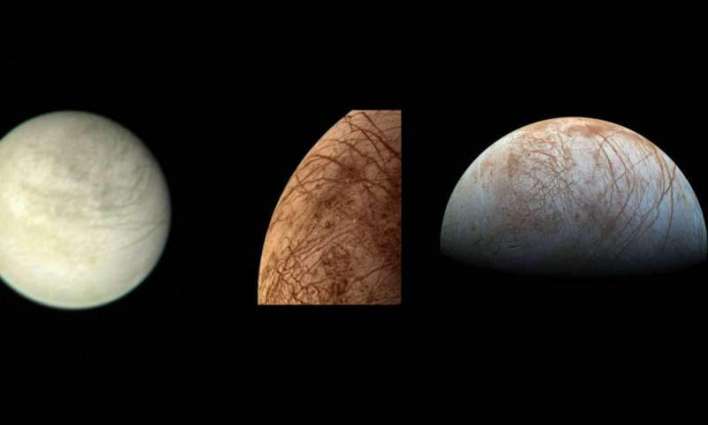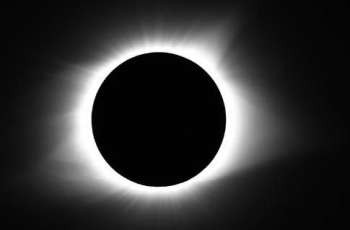Scientists from NASA's team at the Goddard Space Flight Center confirmed, for the first time, that there is water vapor above the surface of one of Jupiter's moons, Europa, which supports the space agency's long-held theory that an ocean twice as big as Earth's, and one that could sustain life, may lie beneath the moon's icy surface, an official statement issued on Tuesday said
MOSCOW (Pakistan Point News / Sputnik - 19th November, 2019) Scientists from NASA's team at the Goddard Space Flight Center confirmed, for the first time, that there is water vapor above the surface of one of Jupiter's moons, Europa, which supports the space agency's long-held theory that an ocean twice as big as Earth's, and one that could sustain life, may lie beneath the moon's icy surface, an official statement issued on Tuesday said."Essential chemical elements (carbon, hydrogen, oxygen, nitrogen, phosphorus, and sulfur) and sources of energy, two of three requirements for life, are found all over the solar system. But the third � liquid water � is somewhat hard to find beyond Earth. While scientists have not yet detected liquid water directly, we've found the next best thing: water in vapor form," Lucas Paganini, lead scientist on the investigation, was quoted as saying in the statement.
The discovery was made with the help of a spectrograph at NASA's W. M. Keck Observatory in the state of Hawaii. The team of scientists said that the water they found on Europa would be enough to fill an Olympic-size pool in a few minutes.
At the same time, it was found that the release of water occurred infrequently, at least if talking about those quantities that could be detected from Earth. A weak but distinct signal of water vapor was detected by scientists only once during 17 observations between 2016 and 2017.
According to NASA, scientists will soon be able to study Jupiter's moon more thoroughly as part of the Europa Clipper mission, which is scheduled to begin in mid-2020.
Last year, NASA Administrator Jim Bridenstine indicated that the exploration of Europa was of the United States' national interest.
Europa, also known as Jupiter II, is the sixth-closest moon to the largest planet of our solar system. Its surface is covered with ice, which has led to the theory that an ocean, in which microscopic life-forms potentially live, lies under the ice.
In 2016, NASA's budget allocated funding for the development of the Europa Clipper interplanetary mission to scan Europa for any life forms.




